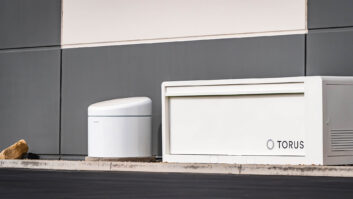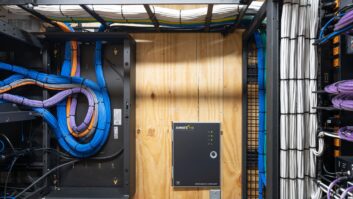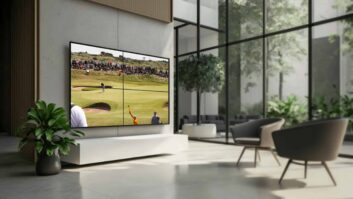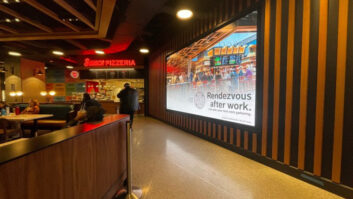Designing For Success
How Superior Industrial Design Can Make All The Difference
First impressions count and whether positive or otherwise, they are lasting ones. Nothing makes a stronger first impression than a well-designed product. Products are often sold (or passed over) based on the customers instant impression of them, and no amount of demonstration, selling, or discounting will change their mind.
Industrial design can mean different things to different people. For many, it relates strictly to cosmetics, aesthetics, or styling. However, especially in consumer electronics products, industrial design often incorporates ergonomics. It can even mean a product that is easier to install or more flexible to upgrade or expand.
If a product is visible, users want the technology to serve them without looking too technological. Because the interface between the product and user is critical to its success, industrial design also promotes comfort, safety, and ease of use. Good design is even about how quickly you can get a product out of the box and running, without having to read the owners manual.
One thing that designers themselves agree upon is that a successful product design is one that integrates a total partnership between the designer, engineering, and the client. Ultimately, for most companies this need for differentiation and how well it sells is a bottom-line measure of success. And it can often mean the difference between success and failure of either the product or the brand.
More and more consumer electronics brands are turning to industrial designers to help bring their products to market. They hope to improve their brand image, enhance perceived value, increase sales and market share, or to make their products more global. Industrial design has become more than just styling and fashion; it is good business and often critical to the bottom line.
Virtually all of the products that the residential systems installation markets, sells, and installs demand simplicity and ease of use. These attributes can be the difference between making a sale or not. Whether or not the customer is happy with their products could mean the difference between repeat business and referrals or not. Good design is also important to the dealer and installer. How quickly a product can be programmed, set up, or professionally installed means saving time and money.
In todays highly competitive marketplace, the divide between mass-market retailers and products and the specialist has never been greater. Custom retailers and integrators must offer products that look better, are easier to use, and have more value added than those of commodity brokers. Service alone wont get it done.
So with all of that in mind, why not go right to the source and ask three industrial designers, who have also served as judges for Residential Systems magazines Resi Awards, what they look for in an excellent design? Two interviewed for this article are judges for this years awards (see Resi Awards finalist profiles starting on p. 34) while one was a judge last year. All were enthusiastic about discussing their design philosophies and what they look for when evaluating consumer electronics products.
Erik Klemm of HS Design in Gladstone, New Jersey, is one of this years Resi Awards judges. HS Design is a product development firm with an extensive list of impressive clients. HS utilizes what they describe as a user-centered concept with an emphasis on creating unique products for their clients. The point, of course, is not differentiation for the sake of being different, but it is to provide their clients with distinctive products that provide a strategic advantage in the marketplace.
Klemm further detailed the approach that HS takes. By integrating more than 35 years of insight, experience, and innovation, we design products of greater value that will create a differentiated advantage for our clients. In combination with the end users needs and client capabilities, we increase a products value and reliability by interpreting the needs of a specific market segment, thereby stimulating sales. HS Design is comprised of researchers, designers, and engineers working to optimize the most efficient design solution.
No stranger to the consumer electronics arena, HS has designed numerous CE products such as laptops, cell phones, and digital cameras. Citing how CE products can be different than others, Klemm explained, The design of consumer electronics is always an exciting process. The timeline from initial proposal to manufacturing is extremely fast paced. And usually with CE products, there is a race in bringing it to market. Everyone wants to be the first on the block to showcase a new technology, user interface, or aesthetics in helping to differentiate and increase the sales of their product.
Klemm noted that one of the unique challenges that HS faces is having everyone involved in a project in sync with one another. This may include the client, designers, engineers, manufacturers, and marketing department. Everyone wants the product to be a success, fitting in the allotted time frame and budget. The challenge, he said, lies in each department working together seamlessly to secure those obstacles and provide each other with support and motivation to move forward.
Klemm believes that industrial design is critical to the success of CE products. If done right, it will provide a seamless transition to manufacturing, which enables more efficient tooling and molding, he explained. From a user standpoint, industrial designers play a vital role in understanding the consumer. Research, ergonomics, and role-playing help designers to get a grasp on how this product needs to develop and evolve. We are always working toward a product that the end user will truly benefit from.
For his judging with the Resi Awards, Klemm said he looked for products that fit their environment and their intended users. These are products that express an appropriate aesthetic as well as an intuitive user interface.
Michelle Berryman is a founding principal at the Atlanta-based design firm, Echo Visualization. Echo Visualization was founded in 2002 by Berryman and Brian Lynn and conceived as a boutique design firm that would merge interactive media and ubiquitous computing technology with environment design to craft compelling user experiences. EchoViz, as they refer to themselves, uses established design strategies and advanced visualization techniques to engage customers and build brands. The firms industrial design team offers media, broadcast sets, exhibits, and animation that employ the principles of effective user interface and human interaction.
On her firms design philosophy Berryman stated, In the competitive global economy, companies that wish to succeed must compete on something other than price. There will always be a competitor willing to sell a similar product for less money. The real differentiator will be the experience associated with the product. Companies willing to invest in crafting the user experience will have a portfolio of products that are different from their competition by design. Design can be the lever that fosters brand and product loyalty among consumers. Design creates value for consumers.
On the design process itself, Berryman said that her firm tries to immerse itself in its clients culture. They try to understand who their client is and what motivates them. This helps us craft solutions that align with our clients value system, and it helps us stretch beyond their comfort zone when appropriate, she explained. Equally important in the process is understanding who our clients customers are, what their needs are and most of all, how they will use the product we are creating for them.
Jim Wilson is a past judge of the Resi Awards and offers quite a unique perspective in the world of design. Jim works in the retail sector, advising on what constitutes the best designs for the company and most of all for a major retailer and its customers.
He admitted that he has a fun and exciting job, but insists that it is far from easy. One of the challenges of working in mass-market retail is that any product requiring physical installation or modification becomes difficult to communicate in that type of store, Wilson said. The vast majority of customers expect a simple plug & play solution.
He also cautions about how industrial design is often misunderstood even by industry. Industrial design can be misrepresented as those guys who make it look pretty, Wilson explained. In fact, the profession is focused on creative problem solving. Great designers take a multi-disciplinary approach and play a critical role in product development. They will strive to synthesize the diverse needs of the manufacturer, retailer and consumerall the while building in an appropriate aesthetic that will be meaningful to the end user and enhance the product brand.
Wilsons outlook on evaluating products for the Resi Awards was similar to what he does in his day job. A successful design is one that will provide joy or eliminate frustration for the user. In the best cases, we get to achieve both while propelling a business forward. As life gets more complicated, we need to ensure that are products are working for us, and not the other way around.
Designing for success often determines a products popularity, and therefore well-executed industrial design can have a huge impact on the bottom line. In some cases, especially in a competitive category, a products design can spell success or failure for an entire brand or company. It also can make for a happy or dissatisfied customer. Consider those design elements on your supplier checklist as you tour this years CEDIA EXPO and beyond.
Peter Hoagland is an industry marketing consultant based in Warrenton, Virginia, who wishes he could design products.







